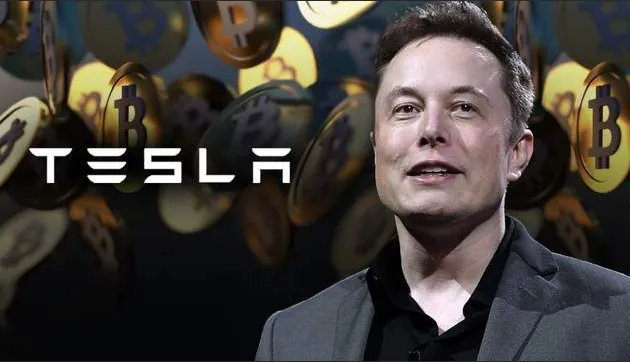Original Title: "What is our startup Funes doing, and how did we raise funds?"
Original Author: Hanyang MASTERPA
Editor's Note: On November 6, YZi Labs announced its investment in Funes, an AI-driven online museum dedicated to collecting, preserving, and curating 3D models of all human buildings. The author of this article, Hanyang MASTERPA, is a co-founder of Funes. In this article, he shares why he founded Funes and his experience in securing funding. The following is the original content:
I woke up early to the news that a cooling tower at a nuclear power plant in Tennessee had been blown up. The cover looked familiar, and when I clicked in, I realized it was from a photo I took last year. It was a rainy morning, and my friend Chongqing and I drove over an hour from Nashville to get there. There was nothing on the road except deer and wild chickens, until we parked at the entrance and were suddenly surrounded by a group of big guys—because next door was a private prison, with the main gate facing the nuclear power plant. From the moment we entered, we were eyed by these big brothers, adding a splash of color to their boring morning.

The cooling tower that has forever disappeared
Like many stories with North American stereotypes, the big guys relaxed upon seeing two Asians. After reminding us not to fly drones, they were drawn away by the next alarm. So this abandoned nuclear power plant and cooling tower are among the few buildings we only photographed and did not model. However, even flying a drone to model it would be quite difficult; it was just too large, and the remote control range was simply insufficient.
But it is now impossible to have its model. The massive, even sublime scale does not prevent it from facing the same fate of eventual collapse as the bungalows next to my home. The prisoners and security guards in the prison must have enjoyed a good show.
Humans cannot achieve eternity, but we always want to fight against time. This is the reason for Funes's existence and why we invest our energy in Funes.
0. What is Funes?
It seems I have never formally introduced Funes to everyone. So before explaining our funding story, let me first explain what Funes is.
In 2012, extremists seized Timbuktu, destroying historical relics. In 2014, Shangri-La suffered a major fire. In the same year, the ancient city of Aleppo became a battlefield in the Syrian war, suffering severe damage. Not far away, the ruins of Palmyra were leveled by ISIS in 2015. In 2019, Notre-Dame de Paris was ravaged by fire. In recent years, increasing international turmoil and climate disasters have made world cultural heritage more fragile and endangered. Every corner of the world could be facing its last day. Our material world urgently needs to be preserved and recorded through digitization.
That said, a country's landmark buildings, a house passed down through generations in your hometown, the building you pass by every day… these physical entities of architecture are also carriers of information and knowledge. However, our understanding of them is likely far less than you might imagine. From large buildings, monuments, and ruins to small artifacts, toys, and crafts… these creations are traces and witnesses of humanity on Earth, and they have almost never been digitized on a large scale for common purposes such as collection, protection, and display, and uploaded to the internet for browsing and use.
This is why we founded Funes.
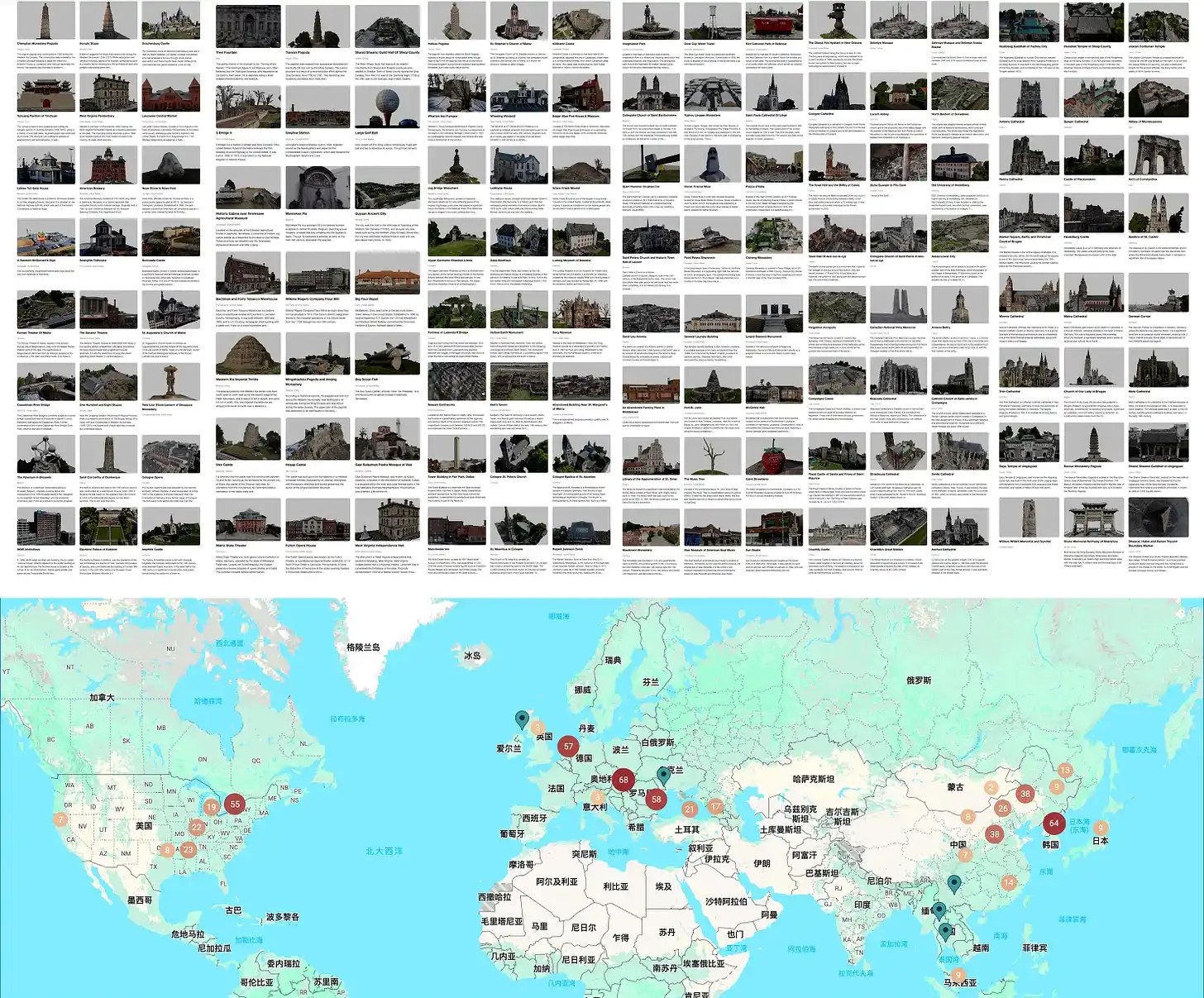
Some models and model-based maps that Funes has already launched
Funes is like a GitHub for the physical world. Together with users around the globe, we model and store all human buildings and structures. Funes's database now includes models of over 1,000 human buildings and structures (not all of which are online yet). These models span continents and cover a time span of over 4,000 years, and the number is still rapidly growing.
We cannot guarantee it, but at least within the known scope, Funes is the largest open architectural 3D database in the world.
Currently, Funes adds an average of 5 to 10 new models each day, some from direct collection by our team, while others come from contributors around the world—from Singapore to Moldova. These models together form an unprecedented digital resource library, providing rich research materials for computer vision and graphics researchers, as well as filmmakers and game creators. At the same time, they open up new research directions in heritage conservation, architectural history, archaeology, and other related fields that were previously difficult to achieve.
When there are enough models, many previously unimaginable things will naturally emerge. For example, cross-regional and cross-cultural real-world visual comparisons. With these models, historians can trace the paths of cultural ideas, studying how different cultures respond to natural conditions and social challenges through their architectural environments. An ancient trade researcher can now "stand" simultaneously in front of a pass in northwest China and a caravanserai ruin in Anatolia, meticulously comparing stone carving techniques and architectural structures. Scholars can also use our large map function to "connect points into lines, and lines into areas," gaining insights into development trends across regions and eras.
Each 3D model in Funes comes with coordinates and modern addresses, and is associated with 3D terrain data. Therefore, the database also becomes a powerful tool for geographic information system (GIS) analysis and spatial humanities research, assisting urban planning researchers in analyzing settlement patterns and building distributions in different terrains. Especially for large site models, archaeologists can use this to correlate site locations with geographical features, ancient transportation routes, and early urban planning, examining the impact of climate and terrain on architectural development, and even mapping the cross-regional spread of architectural styles. These high-precision geographic spatial data can also be used for planning and developing heritage tourism.
For professional users, Funes has launched a series of features that aid research:
The "wireframe mode" allows engineers to penetrate surface materials to view the structural details of the model's triangular mesh, while heritage conservation personnel can use it to analyze the internal structure of buildings in depth.

Wireframe and survey line drawing mode, Sopoćani Monastery
Unlike general online model libraries, Funes also offers a professional "orthographic view" feature. "Orthographic" comes from descriptive geometry, and this mode eliminates the "near big, far small" effect in perspective through professional measurement rendering. For example, a tall tower or cathedral often appears smaller at the top than at the bottom in ordinary photos, while "orthographic view" completely avoids such distortion, allowing for a more accurate comparison of the proportions of large-scale buildings—whether it is Cologne Cathedral or an ancient Tang Dynasty pagoda, it can be presented with the precision of Liang Sicheng's architectural drawings, completely eliminating perspective distortion and lens aberration, greatly aiding archaeologists in understanding architectural proportions.

The difference between standard perspective and orthographic perspective at the same viewpoint, Shanxi Association Hall in Sheqi, Henan
Based on "orthographic view," Funes has pioneered the "survey line-drawing mode" globally, relying on a large number of survey drawings and model 3D structure optimization, which can automatically generate archaeological-grade architectural drawings, including floor plans, elevations, sections, overall plans, axonometric drawings, and orthophotos, with quality meeting the standards of the Historic American Buildings Survey (HABS), satisfying the needs of academic publishing and comparative research. This mode also adopts the UNESCO universal heritage survey archiving format, effectively supporting international cultural heritage protection and "heritage application" cooperation.

Survey line drawing and model overlay of the 8th Hall of the Silla Temple, a thousand-year-old temple in Korea, which is the 55th national treasure of Korea
Thanks to optimized photogrammetry algorithms, every scale structure and geometric relationship in Funes models can be measured and calculated. The mathematical structures and modular designs in Bauhaus, Metabolism, and Brutalist architecture can be precisely extracted using measurement tools, assisting researchers in exploring spatial philosophies such as the eaves curve of East Asian traditional architecture or the complex curved structures of Greek temple column proportions; they can also be measured with extremely high precision in 3D space.
These professional modes provide researchers with tools that were previously only obtainable through expensive field surveys.
Soon, Funes will support 360-degree panoramic browsing, covering not only the exterior of buildings but also delving into the interiors, providing a complete spatial experience. Researchers can "walk into" a 13th-century Gothic cathedral, gaze up at the soaring vaulted ceilings, and observe the light and shadows cast by stained glass on stone columns; they can also step into a traditional Chinese courtyard, experiencing the changing scenery created by the courtyard, corridors, and rockeries. Complete internal panoramic records can assist restoration engineers in determining the position of each beam and the spatial relationships of each mural, as if it were a digital "Noah's Ark" of cultural heritage.
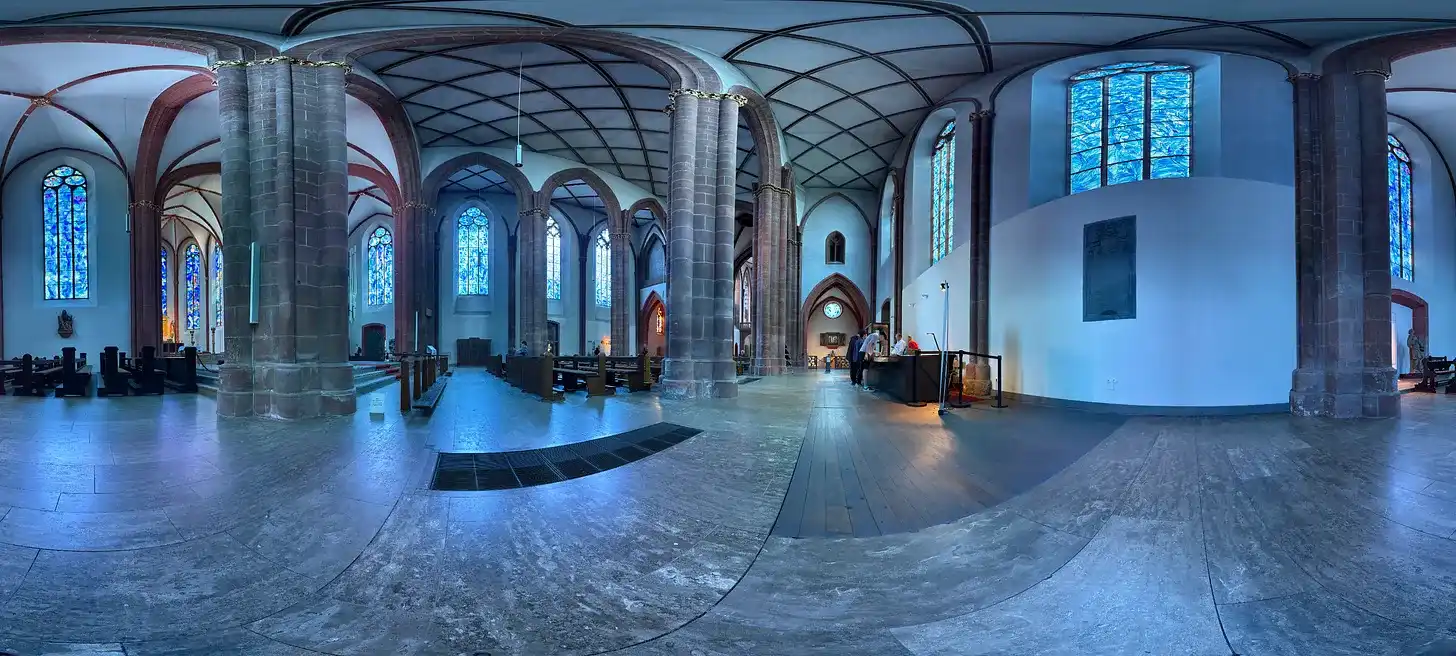
The panoramic photo is from St. Stephan's Church of Mainz, where the blue stained glass throughout the church was created by Chagall.
The introduction documents for each architectural model are also an important part. Currently, we are developing our own AI pipeline to enable machines to simultaneously understand expert descriptions, academic materials, and the visual features of 3D models, thereby generating accurate and comprehensible encyclopedic introductions. We are gradually rolling out real-time AI commentary and interactive browsing features. This experimental educational tool allows users to freely browse, rotate, and zoom in on buildings, while the AI provides instant commentary on the structural and historical context of the details observed, achieving a deep integration of visual and textual information. A demo is already online, and you can check the effect on the page of Selimiye Mosque.
Funes hopes that even if the physical buildings are damaged, the spatial memory of civilization can still be preserved intact.
Architecture is the tangible crystallization of the wisdom of different civilizations, different periods, and different people; it should be shared by all humanity, rather than heading towards an inevitable fate in a lonely corner. Many times, buildings are considered worthless or obstructive to urban development and are inadvertently demolished. Decades later, someone discovers the incredible importance of these buildings, but can only learn about them through archives or photos, and by then it is too late to reverse the damage. The modern ability to appreciate everything around us is questionable; all the spaces around us contain unimaginable significance, as long as we can truly delve into research and pay attention to the information they convey.
By lowering the modeling threshold and opening up more data, Funes is truly promoting the democratization of cultural heritage: a child from an inland mountainous area can now observe the details of world-famous buildings just like a university student on the East Coast of the United States. The openness of model access and the diversity of model collection go hand in hand: whether it's high-precision scans from archaeological teams or photos taken by local residents with their smartphones, every contribution is included in the archives. This means that the recording of cultural heritage is no longer the privilege of a few experts, but a cause in which all humanity can participate.
The value of a specific place is inherently immeasurable. Its importance can never be measured solely from a social perspective. The place where we had our first date, the lawn where we walk our pets, the room we once called home but no longer exists, the restaurant where we have fond memories of loved ones who are no longer with us, the office where we started our careers, and the classroom where we last sat—these places may not attract the interest of historians, but they hold immense value for all of us because they define our human existence through experiences, feelings, and memories. Therefore, protecting these seemingly insignificant spaces is equally crucial.
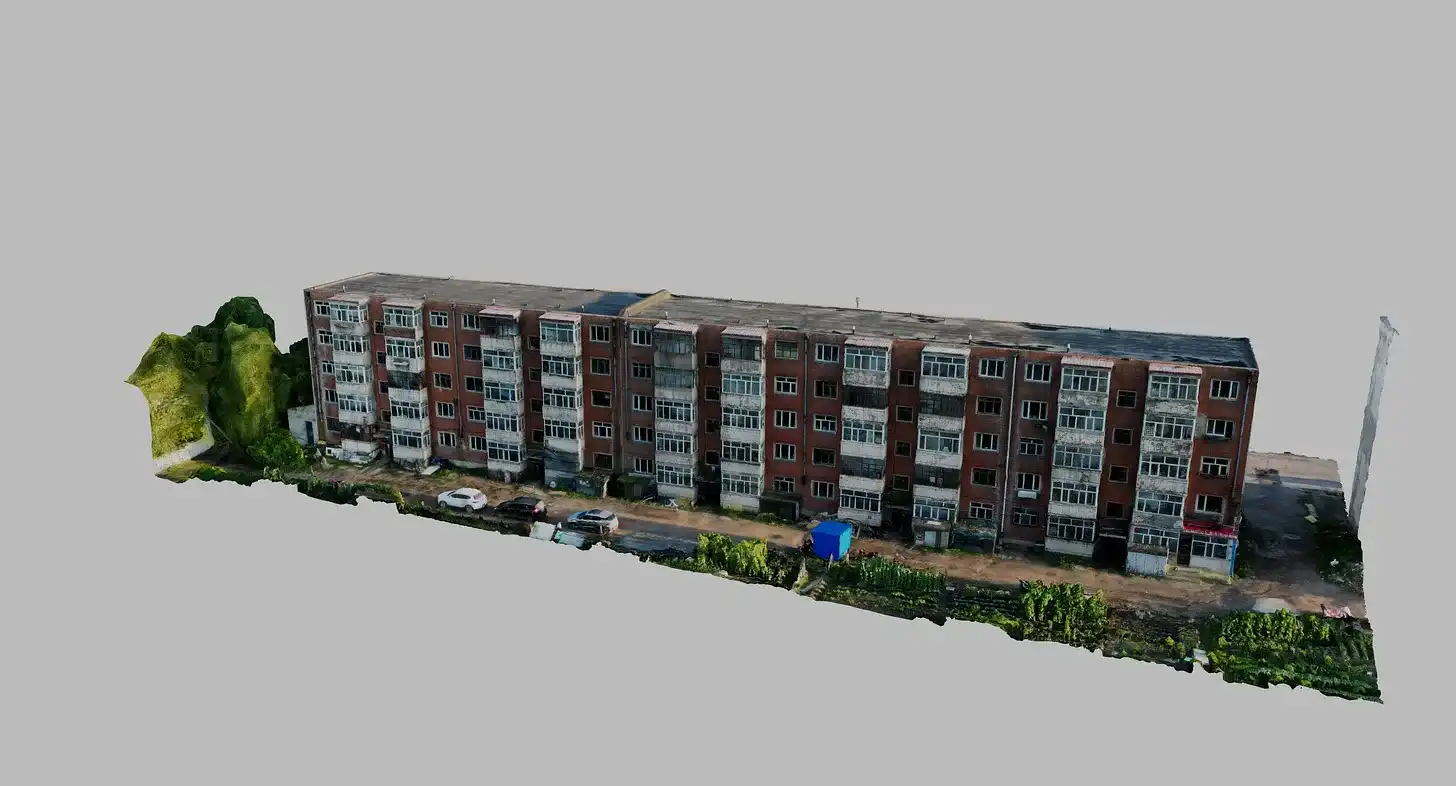
The tube buildings in Qitaihe, which are childhood memories for me and countless others.
Funes's ultimate ideal is to connect the online realm with the physical world, not just these meticulously researched, curated, and significant "important spaces," but also the spaces of each of us, every moment in our ordinary and intimate lives.
1. About Funes's Funding
After starting Funes, there are three questions that almost everyone asks me every time I meet someone:
1. How do you model?
2. How do you make money?
3. Who invested?
These three questions have a strict order. I will write a separate article about the second question; this time, I will mainly discuss the third: who are our investors in this round? How did we negotiate? Because fundraising itself is a long, tense process that can make founders anxious, writing about it is not particularly interesting. So for readability, I will focus on a few key moments.
I feel that in the current market environment, there are mainly two types of early-stage projects: those where the founders have not started, but investors have already locked in; or those that cannot secure funding. Companies that successfully raise funds through a 4-6 month effort, like a few years ago, are indeed rare and are statistical outliers. When we prepared to raise funds last June, we had this psychological expectation: it would be good if we could get the money by December at the earliest. So it was best for everyone to model more, gather data, and achieve results while spending as little as possible.
Some people think of fundraising as a moment: someone wants to invest in you, you get the money, and it’s over. But in reality, fundraising is a process that requires time, from initial contact, formal meetings, discussing agreements, to transferring funds… So this means that founders cannot just say, "I want to hold back for something big," and then work hard for a few months to present particularly good data to people. It’s not like that at all. Because fundraising is a process, founders must keep the company moving upward throughout this process to assure investors that they are not mistaken.
Thus, my life basically turned into two parts: going out to model and share with users, and going out to meet investors. These two tasks cannot be done together because the places where investors are often have drone restrictions.
After deciding to do Funes, I went to Xiamen to meet Professor Liu Feng, who advised me to meet people as soon as possible because the market could turn bad at any time. He discouraged me from preparing first before meeting investors and instead urged me to talk early and understand what investors were thinking. At that time, I was running around Shanghai and Hong Kong, and HG's KK and Walter had extensive networks, helping me introduce the first batch of investors to talk to and analyze how to pitch. Thus, fundraising was initiated.
I must say that Professor Liu's prediction was very accurate. Time flew by to September, and I had accumulated nearly four months of experience being rejected by investors. This was not a big deal because being rejected essentially reflects a different perspective on the company from another person; sometimes, this can be helpful for the founder. As a side note, it’s a pity that most investors cannot ask questions that would truly impress founders. Occasionally encountering one, I would be extremely grateful. The first moment that greatly helped me in this round of fundraising was in Silicon Valley. I hadn’t been to Silicon Valley for three years due to the pandemic, and Super Brother helped me connect with a group of friends there. One American investor, after rejecting me, spent an hour analyzing the challenges and difficulties of fundraising in Silicon Valley. Without him, I would have wasted a lot of time.
After September, due to many activities, I came to Singapore. It was incredibly hot, and I felt like I was living in an endless summer. One afternoon, I was modeling the CHIJMES Hall. Since the MegaETH event was happening there, Shuyao asked if I could showcase Funes at the event, and I said I would model the venue. Just as I finished, Siyuan from ABCDE messaged me, asking if I wanted to meet their founder, Du Jun.
My instinct was that ABCDE was unlikely to invest in Funes; I felt it was too far and too hot to go over. At that time, I was wearing my summer modeling outfit: a quick-dry shirt and shorts, and it wouldn’t be good to meet someone all sweaty. I thought about politely declining. However, Siyuan gave me an irresistible reason: he said the rooftop of ABCDE's office could see the roof of CHIJMES Hall. This was impossible to refuse because drones were prohibited in that area, and I couldn’t take a photo of the roof.
When I arrived, he took me directly to meet Mr. Du. Upon hearing me say we are like Wikipedia for the 3D world, he told me that he loved Wikipedia as a child, jumping from one entry to another, imagining where he would travel. He could spend half a day on it. But back then, the Chinese content was even scarcer than now, and he had to translate it himself, understanding only half of it. He then said that Funes's philosophy is very similar to Wikipedia, and he completely understood why we wanted to do this.
Then he said: let’s not talk about investment for now (my heart tightened), he personally would donate $100,000 to us (my heart was shocked).
We then talked a lot about his involvement in creating Discuz!, which I will eventually record with him, so I won’t write about it here. Finally, he said: Funes is also worth investing in, but the investment process is relatively long. So let’s donate first and then discuss the investment. With some money, we could do more. As I was leaving, he told me that he genuinely liked Wikipedia, but I should change the metaphor for Funes when meeting most investors; everyone says they like Wikipedia, but no investor wants to invest in Wikipedia.
Hearing this, I thought he was just being polite by saying donate first and then invest, but I was still very grateful for the $100,000—after all, this was the first money Funes received. The next day, we began to push forward with the investment matters, and the entire process went very smoothly. However, now the ABCDE brand has ceased operations and has changed its name. Funes may be the last project ABCDE invested in.
As I was leaving, Siyuan kept his promise and took me to find the window that could see CHIJMES Hall's roof—I could indeed see it, but it was too small to photograph.
I want to especially thank Shuyao for helping us a lot; I appreciate it! MegaETH is also a fantastic project, and I like everyone involved (I even thought about recruiting some of them). At the beginning of our fundraising, Siyuan introduced MegaETH to us, and later I got to know many friends there, which helped us tremendously. I feel that finding a group of partners who can help each other in entrepreneurship is very important—but often overlooked; it’s not just about fundraising; who accompanies you in fundraising is equally important.

Attending the MegaETH event; at that time, I still had yellow hair (actually silver and faded).
The day after meeting Mr. Du, the GM of Dragonfly messaged me: could I stay an extra day in Singapore to meet Bo Ge (Mr. Feng Bo)? They could reimburse the change fee. I was chatting with Mable at the time, and she said if you can meet Bo Ge, you should go quickly. Moreover, the rescheduled ticket was cheaper than the original, and Ctrip even refunded me over a hundred yuan.
I met him at Bo Ge's home, and as soon as I walked in, I was captivated: there was a piece by Ernst Haas.
Since I have many subscribers to this newsletter, some friends may not know what I have done. Here’s an explanation: if you look at my daily work, you could consider me a photographer. Ernst Haas was a pioneer of color photography, and the photo in Bo Ge's home was one I had seen in my class materials. I originally thought it was a small piece, but the original was quite large.
So unlike typical fundraising meetings, the first question I asked Bo Ge was: that piece is by Ernst Haas, right? Bo Ge probably didn’t expect someone would ask this, and we started talking about photography. So that day’s conversation was a mix of Funes, large format photography, Polymarket, Mamiya 7, Protra 400, interests about the future, the meaning of life, and a series of completely unrelated topics. Even though I have been fundraising for many years, I had never had such a wide-ranging conversation.
The GM has been responsible for the Funes project and is very attentive. However, we faced a significant challenge with Dragonfly: the amount of money we wanted was too small. Here’s an explanation: for large funds, investing in small projects does not consume much less energy. After investing, they still have to manage it. So they generally calculate how much they can manage with this fund and these personnel, which leads to a minimum investment threshold.
For founders, getting more money is not necessarily a good thing. More money either means giving up more shares or a higher valuation. Frankly, I believe that valuations before going public are often just a facade, many times to satisfy the vanity of founders. Being the founder of a company valued at $100 million holds no appeal for me. We can only raise funds at a reasonable price without wanting to give up too many shares.
However, Bo Ge did not put me in a difficult position. He gave me a proposal: whatever is left in this round, he would personally invest.
So I first had the first investor in this round and the last investor. Mable, who urged me to meet Bo Ge, is also a podcast host; the first public introduction of Funes by Chongqing and me was on her show.
York from Generative Ventures and I had always wanted to meet in person to chat, but we never managed to—during fundraising, such matters occupied 80% of the time. Even though we were all working remotely, we still hoped to meet in person for investment discussions. Later, York suggested that I meet with his partner Will first. However, similarly, we could hardly meet. Finally, he came to Beijing, and I went to Shanghai, and we met at the KFC in Hongqiao Airport. I brought a 3D-printed plastic model of the Liaozhongjing Ming Pagoda and used it to explain to him. He could sense that this pagoda was supposed to be my gift—but it wasn’t, because we didn’t have time to print more, and I had to bring this one to show everyone. However, the investment matter was settled at KFC.
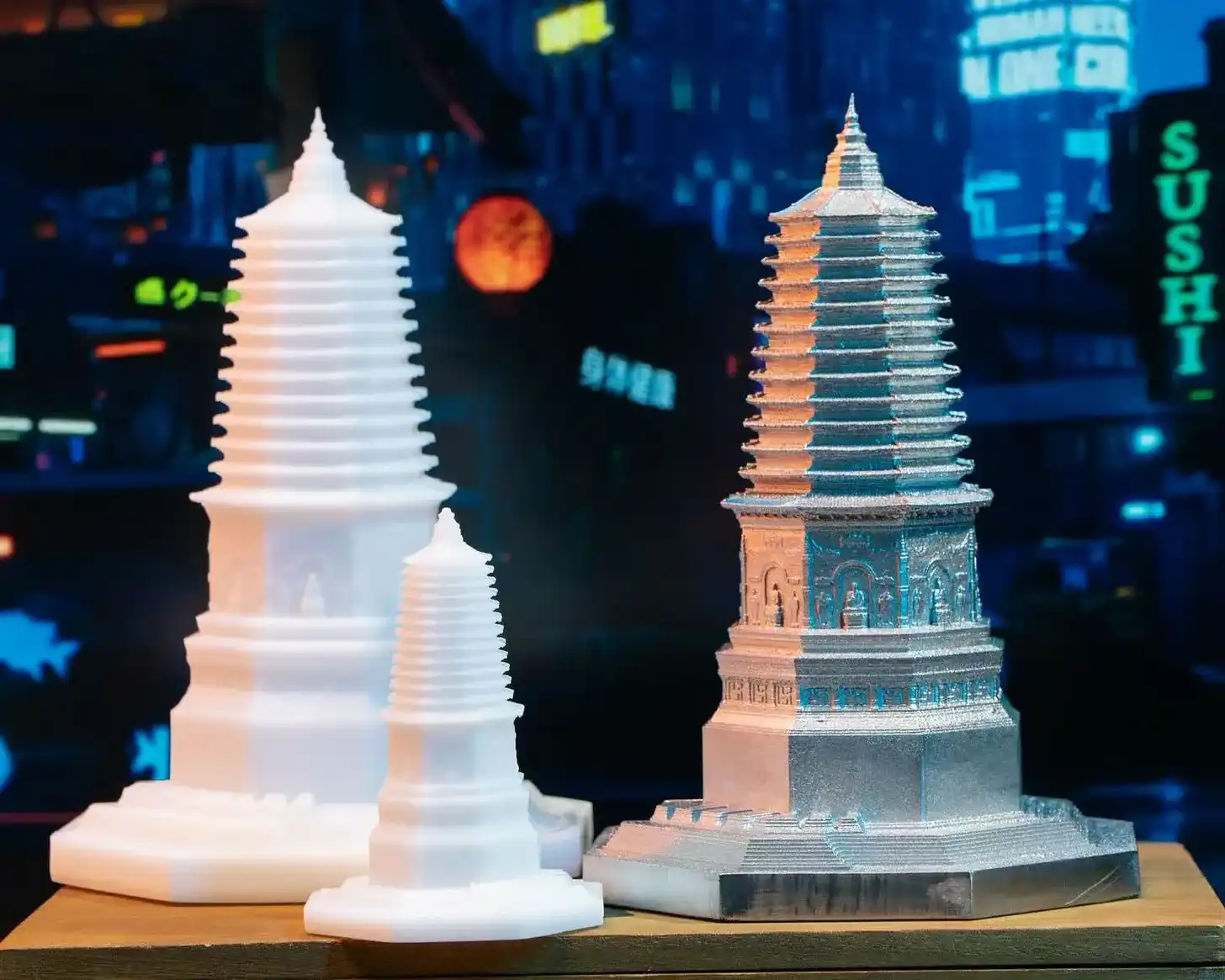
At that time, I was holding the large Ming Pagoda in white from the picture, but now all three in the picture have been given to friends; the two on the left are plastic 3D prints, and the one on the right is stainless steel 3D print + polishing.
Later, he also introduced me to Anna, the founder of BAI. Before the meeting, I asked the founder Xiao Wan if she knew Anna, and she said she was a very good conversationalist and talkative, which turned out to be true. I just want to say, friends, if you see this, could you come or recommend your invested companies to join our "Mayfly World" for a chat!
Next, let’s talk about the plastic pagoda. I went straight to HashKey's office after leaving the airport. I met Jeffrey from HashKey at a dinner hosted by Li Yang in Chiang Mai. I didn’t know Jeffrey was into investments, but after returning home, he invited me to chat. We didn’t discuss projects much, but we talked a lot about the Liaota. So this time I brought the plastic version of the Liaota to Shanghai. Thus, the deal with HashKey was discussed during our conversation about the Liaota.
Of course, the fastest deal in this round was finalized over a meal at our investor Michael Jin's home with Owen. How should I put it, fundraising might indeed require several meals. Our collaboration with D11 was also discussed at a restaurant in Dubai that seemed to specialize in tourist meals.
I also want to thank a friend, Jarseed—whether in Beijing A or online, he helped me and several partners understand a lot of industry knowledge.
No more mundane details; I apologize for not mentioning some investors here. I believe many friends reading this article came across it because of the news that YZi invested in us. So let’s talk about that.
I actually spoke with YZi quite early. Just a few days after my first meeting with Mr. Du, I met Dana from YZi Labs. At that time, it was still called Binance Lab. However, I wasn’t very optimistic before the meeting because Funes didn’t seem like a project that a lab would invest in. But after talking with Dana for over two hours, I felt there was still hope. Dana's curiosity about Funes was more focused on us partners. We shared many stories that happened during modeling. Of course, we also talked about why I wanted to write about Binance at that time.
In fact, if you are reading this, you might realize that the investors who are likely to invest in you probably won’t just talk about the project during your first meeting. Those who might invest in you could be interested in you as a whole, and the project itself will gradually be clarified during the long process of further fundraising. So through Dana's questions, it felt like we could move forward.
However, two things happened next: one was that Binance Lab changed its name to YZi; the other was that Siyuan left ABCDE to join YZi. So internal adjustments take time, and I felt awkward pushing forward—Siyuan led the investment in us at ABCDE, creating a conflict of interest. Indeed, during the entire fundraising process afterward, Siyuan avoided the whole process except when we met as friends.
However, Dana later took the initiative to reach out and suggested we chat in Hong Kong. Just right, Ke Da, Chong Qing, and I were all going to Hong Kong, so we brought along the album we had just made. The album contained photos taken during our work on Funes. So the three of us, along with Dana, Ella, Siyuan, and Nicola, sat at the largest table in the café and started our discussion from this album.
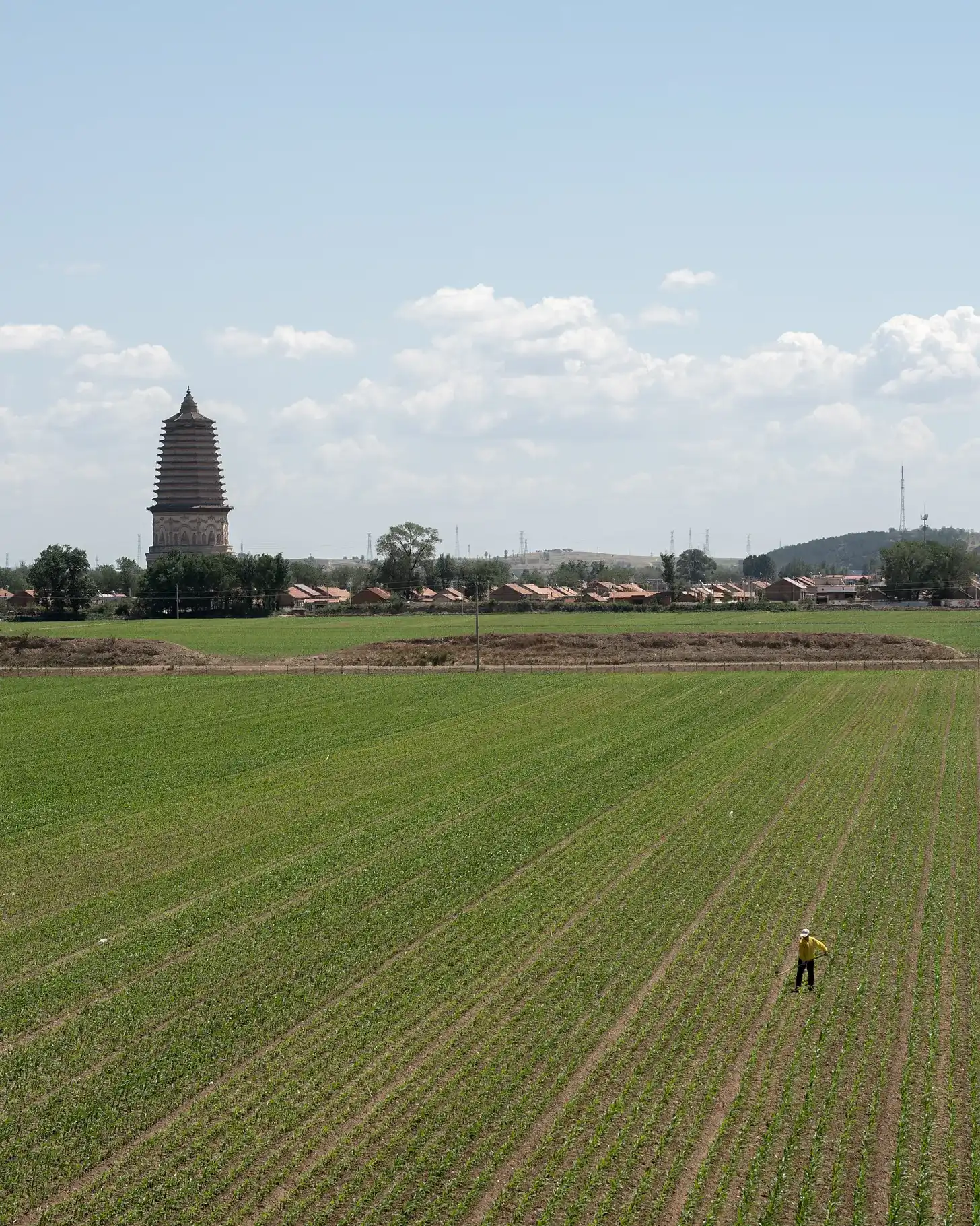
In the distance of the picture is the Liaozhongjing Ming Pagoda, the first model launched by Funes.
As a founder, I really enjoy communicating with excellent investors. Because good investors are never in a hurry to prove they are right. When you meet enough investors, you will realize that many of them just want to prove their intelligence in front of you. So talking about fundraising with good investors is not a question-answer format, but a dialogue. Founders also throw questions to investors. Our main question is:
What should Funes be in YZi's eyes?
Many investors have said that since Funes is based on photo modeling, could it possibly become a 3D version of Instagram? There is a significant logical disconnect here: should a startup become the specific image in the founder's mind, or should it agilely become "any big company"? Many founders deceive themselves here; they say our company will become XXX—this XXX can be any big company. For example, if Funes claims it can become the Instagram of this generation. When I say this, I mean whether the Instagram model is something Funes can learn from, or is it merely because Instagram is a successful big company we can relate to, so we use this description? This balance is in the founder's heart, but for us, Funes has a specific image in our minds, and becoming "any big company" is not the goal.
What is most important for us is Dana's recognition that when founders discuss long-term visions with investors, they calmly reject things that are not them. At that time, Dana casually gave an example: Github is like this; the founders are doing what they believe the world should look like, rather than seizing the market. The founders of Github believe that the organization and flow of the code world should take a specific form, and they want to achieve that, rather than becoming any form to win against competitors and achieve monopoly. Both founders and investors need to know what not to do.
When discussing this, Dana thought for a moment and said: Funes is very much like the Github of the Physical World. Hearing this, I realized it was the best metaphor for Funes I had ever heard—of course, we are not starting a business to become Github, but it is indeed a very good and easy-to-understand metaphor. I now say this in most situations, but I must say this is not my invention (I wish it were, haha).
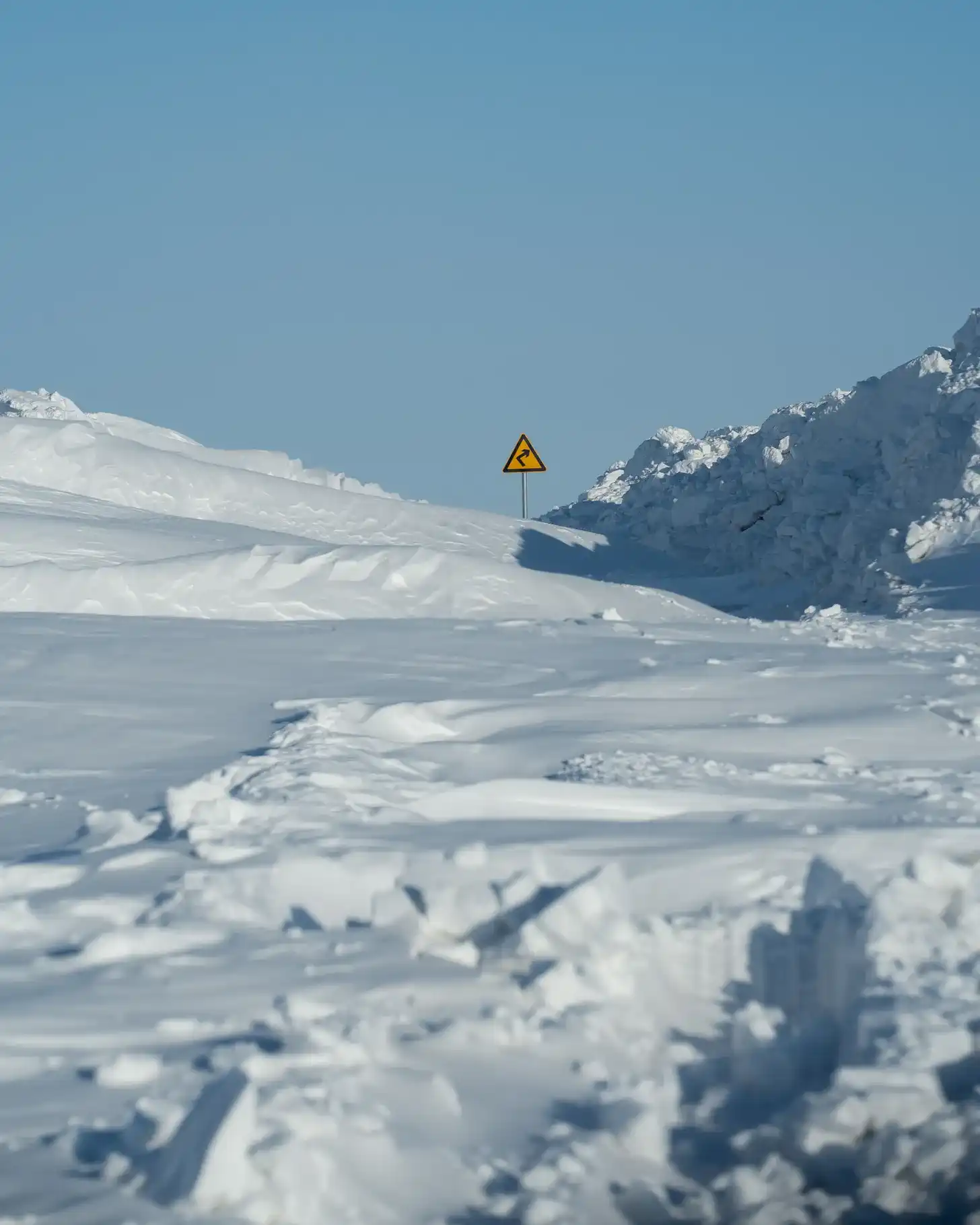
The first photo in the album; this album was only released in physical form and has not been fully published online.
Later, Ella also messaged me, saying that when she left Hong Kong, she had a lot of things, but she took our album back. This made me very happy because these images represent the journey we have taken.
Next was the conversation with CZ. Ke Da and I had a video call with him from a hotel in Huludao. I was particularly worried about the internet connection there, and I experimented many times back and forth. I joked that this might be the most important video call since this local hotel was built.
When we officially talked, CZ said he had known me for several years and recognized that I was more idealistic and serious about my work, not someone looking to make money and run away (thank you for the recognition). So he also wanted to see our other team members. So it was basically Ke Da and him chatting. They talked about the projects Ke Da had worked on, what architectural archaeology is, which countries' ancient buildings need more protection… If you don’t know Ke Da, I highly recommend you listen to this episode to feel his charm. I always feel that if history remembers me a hundred years from now, it will be because I was Ke Da's driver. I digress; CZ and Ke Da hit it off. Then the two of us went to meet Yi Jie again. Before meeting Yi Jie, I realized my mistake as a founder: Yi Jie was one of the earliest people to pay attention to Funes, probably in the top ten. Even many people in our company didn’t follow their own accounts, but Yi Jie did. Unfortunately, when we met, I forgot to ask her how she first came across Funes. I need to ask her next time.
Here’s a side note: founders enjoy communicating with other founders, which means that during fundraising, if the person in charge on the other side has entrepreneurial experience, it’s actually easier for us to chat. Many entrepreneurial contexts don’t need to be explained further.
Reading this might feel contrary to what I wrote at the beginning; didn’t I say fundraising is quite difficult? It seems like a matter of casual conversation. Yes, because if I didn’t write it this way, it wouldn’t be interesting. If I strictly followed the process, it would be a very long and boring account.
This article is different from what I usually write, so I’m not sure who will read this. But in any case, reading this is fate, and I might also be reading it with other founders like me. So aside from these dramatic details, I want to mention what else we have done. The moments I’ve written down only account for 1% of our fundraising process. The rest consists of tedious, boring, and monotonous work. But founders are engaged in these tasks; we do not live on that 1% of shining moments; the remaining 99% is the meaning of our existence.
What we did during this round of fundraising also played a significant role.
Funes's MVP transformed from a conceptual webpage into reality. We built a complete cloud modeling and front-end rendering process from scratch. Due to the unique properties of buildings, we created a data management system. And every step of this was visible to investors. We can ensure that every investor will see progress in our product the next time they meet us.
We really took a lot of models. The entire team basically didn’t stop, modeling in all the places we could go. The Funes project, at its core, is a physical labor job. Why would someone take photos of an unnoticed building under the sun, sweating? In fact, investors are investing in us to understand this process.
We have users. We hold model sharing meetings every week, and each meeting is larger than the last, with more participants. Many people actually go out to photograph their buildings after listening to the sharing session. Ultimately, a project does not survive on fundraising; it survives on users. I am extremely grateful to all the friends participating in Funes.
We were lucky. Many key moments were not solely due to my efforts; luck played a part. How do we view effort and luck? All of us partners like a saying:
A warrior, before his duel, will pray to God for courage and determination, but he never prays for victory itself.
There are also some other costs to fundraising: first, I estimate I won’t be writing new articles in the Binance series for a while. Because this series is for media contributions, there is a conflict of interest. But if possible, I hope to interview CZ or Yi Jie using my own account, Mayfly World. Additionally, some time ago, I had an exclusive interview with Xiao Feng from HashKey. At that time, this interview could not be published for various reasons. Now, due to our cooperative relationship, it is not suitable to publish in the media. But it was a very good interview, and I will see if I can publish it in my newsletter.
Words cannot fully express my thoughts; Funes received a lot of help during this round of fundraising. I cannot write down everyone one by one, but I am very grateful to all.
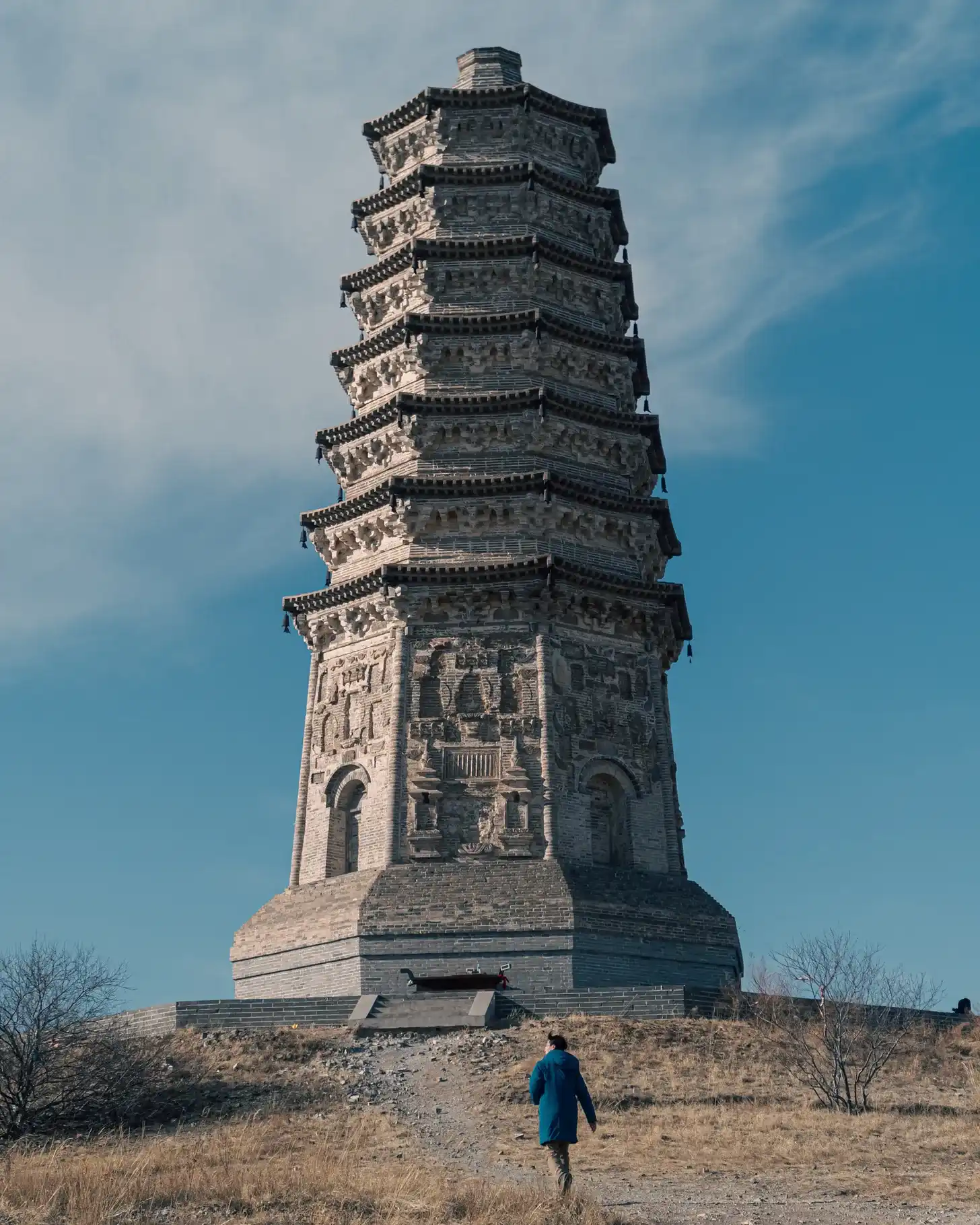
Hanyang walks towards the South Tower of Liaozhongjing
Finally, why is it called Funes?
Modeling the world, why are we so obsessed with this?
Because we are likely the last generation to fully live in the physical world. With the development of technology, the cyber world will inevitably become increasingly important in human life, even more so than the physical world. The most magnificent and greatest construction processes of humanity in the physical world have become history, and our generation is likely the last to dedicate time and money, our careers, and our entire lives to the construction of the physical world. For the next generation, the cyber world will be the ideal land worth striving for.
So it is time to leave a legacy for this material and spatial world. What we are doing is creating a death mask for this world, which is destined to be rigid and decayed, using plaster. Before it transforms into some peaks, triangular faces, UVs, projections, pipelines, and parameters of the cyber world, we leave behind the final verdict.
The efforts of humanity over ten thousand years to transform the earth's surface with soil, wood, stone, brick, glass curtain walls, and reinforced concrete are nothing but a dream. Now is the time to wake from the dream, and we are here to take some notes from the dream, leaving a profile of past illusions.
So you can also think of this project as the last museum, which can never be completed. Ultimately, all materials that have existed in the world, all museums that have collected these materials, and all museums of museums will become the collections and subsets of this final museum.
This is why the project is called Funes. It comes from Borges' story "Funes the Memorious," which is a novel that encompasses everything, just as our plan is to collect all museums of museums.
In the process of constructing this endless, eternal, and possibly futile museum, all things will be born.
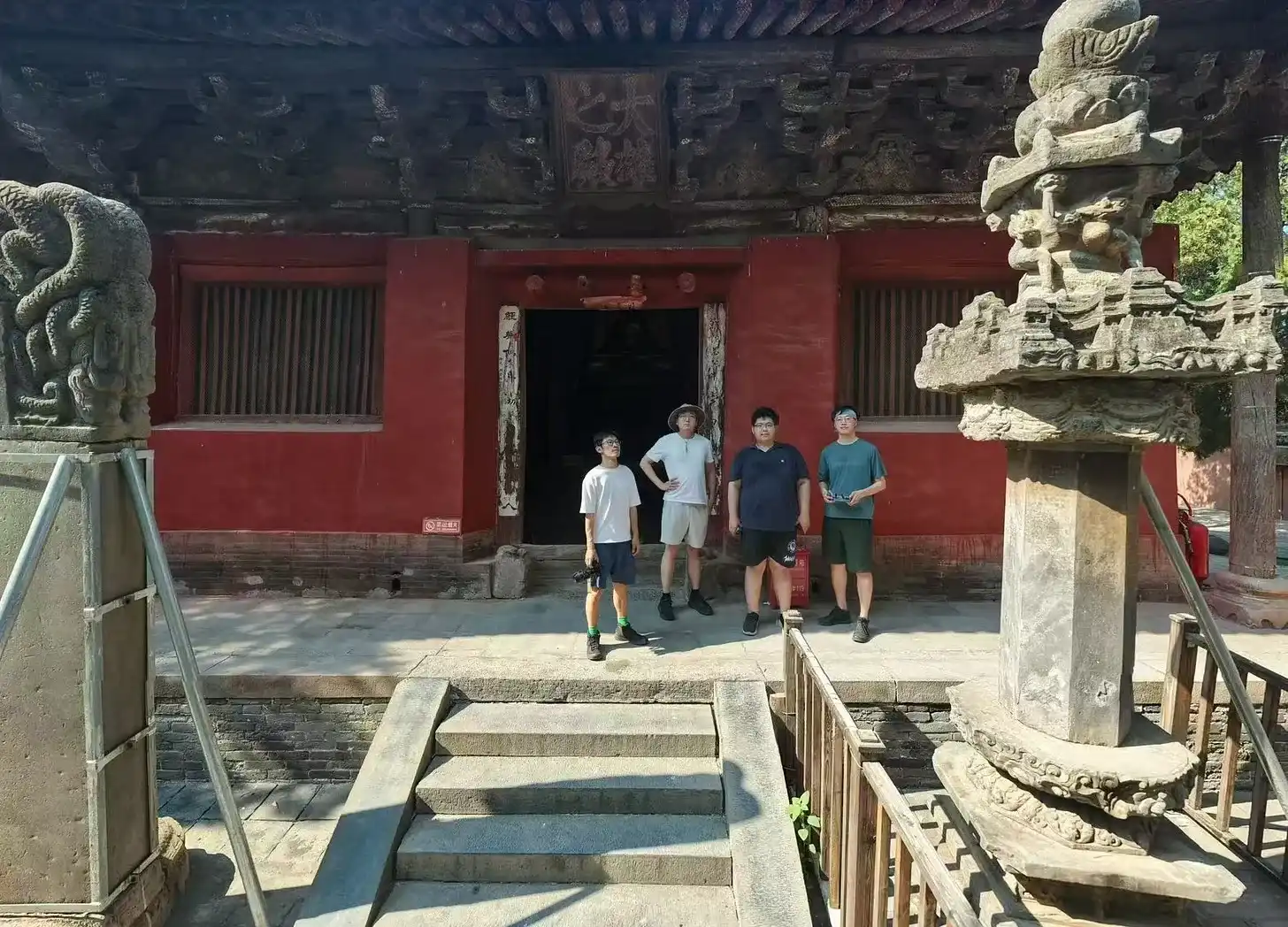
The Funes first-party modeling team at Cisheng Temple in Henan, the temperature that day was close to forty degrees.
Appendix: Recently, we have opened the download of standard precision models. If you want to use our models for any form of recreation, just click twice, and we hope you can share with us as well.
Since you, my friend, have seen this, I feel you should be quite interested in Funes. We hope to collaborate with independent developers to try out some applications and new gameplay for the models. We can open up a lot of data (including but not limited to models and photos).
If you are interested in us, feel free to contact me at hy@funes.world, or if you feel you are a good fit for the Funes team, self-recommendations are also very welcome!
免责声明:本文章仅代表作者个人观点,不代表本平台的立场和观点。本文章仅供信息分享,不构成对任何人的任何投资建议。用户与作者之间的任何争议,与本平台无关。如网页中刊载的文章或图片涉及侵权,请提供相关的权利证明和身份证明发送邮件到support@aicoin.com,本平台相关工作人员将会进行核查。
